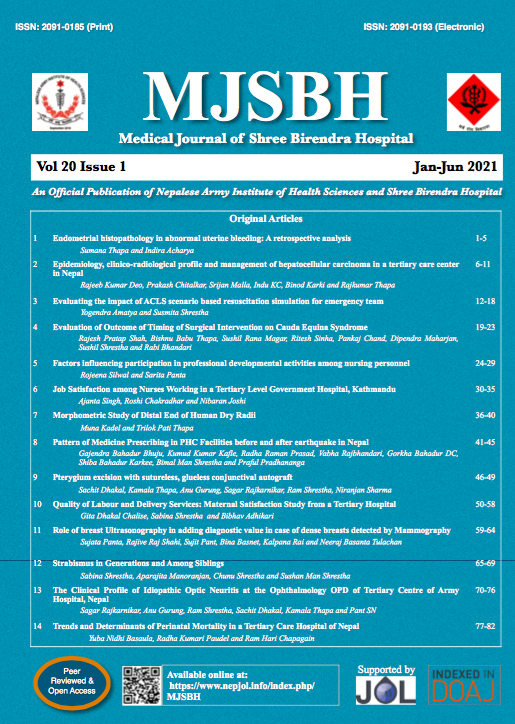The Clinical Profile of Idiopathic Optic Neuritis at the Ophthalmology OPD of Tertiary Centre of Army Hospital, Nepal
Keywords:
demographic pattern; optic neuritis; pulse steroid therapyAbstract
Introduction: Inflammation of the optic nerve is a common cause of visual loss due to optic nerve pathology. This study was conducted to report the clinical features, demographic pattern and response to pulse steroid therapy in patients with idiopathic optic neuritis in a tertiary care teaching institute in Kathmandu, Nepal.
Methods: The hospital data of patients with idiopathic optic neuritis admitted to the Department of Ophthalmology of Shree Birendra Hospital, Chhauni, Kathmandu, Nepal between Jan 2015 to Dec 2018 were retrospectively analysed. The parameters studied were demographic pattern, clinical features, and visual acuity.
Results: Eighteen eyes of 15 patients were found to have optic neuritis (papillits in eight and retrobulbar optic neuritis in 10 eyes). The male to female ratio was 1.4:1. The mean age of the patients was 38.07 ± 11.37 years (95% CI = 31.77- 42.37). The most common modes of presentation were loss of visual acuity, painful ocular movement and colour vision defect. One patient had features suggestive of multiple sclerosis. Response to pulse methylprednisolone therapy was good in most (16 eyes) of the cases except for the patients having recurrent episode and started oral steroid elsewhere before presenting to our hospital.
Conclusions: Response to pulse methylprednisolone therapy was good in patients with initial visual acuity of at least perception of light. Demographic and clinical features of our patients were different from those reported from the western world.
Downloads
Downloads
Published
How to Cite
Issue
Section
License
This license enables reusers to distribute, remix, adapt, and build upon the material in any medium or format for noncommercial purposes only, and only so long as attribution is given to the creator.




